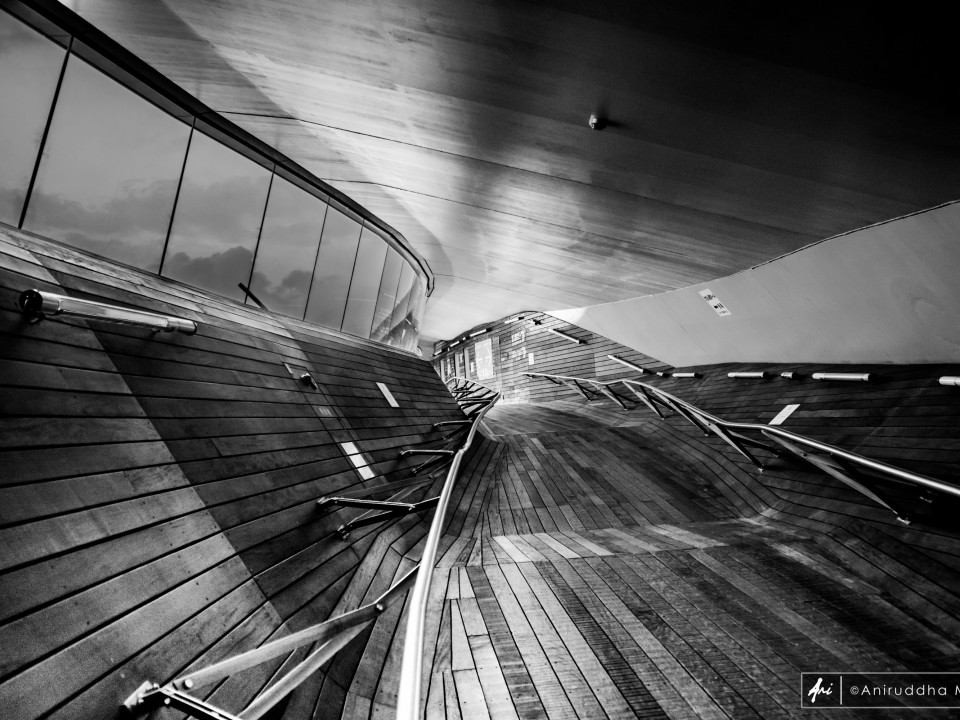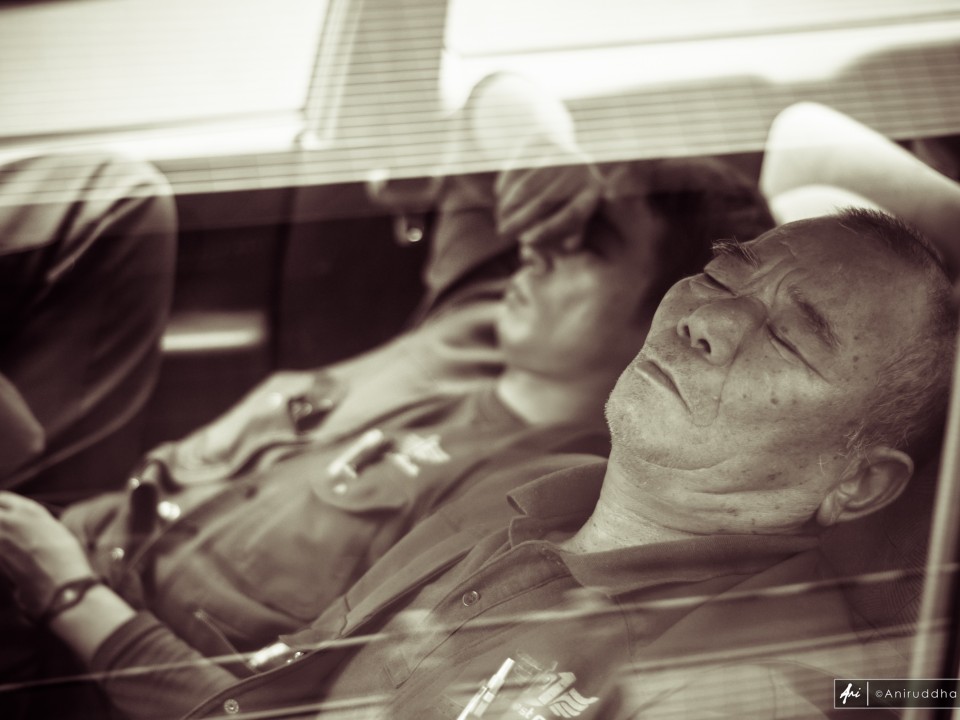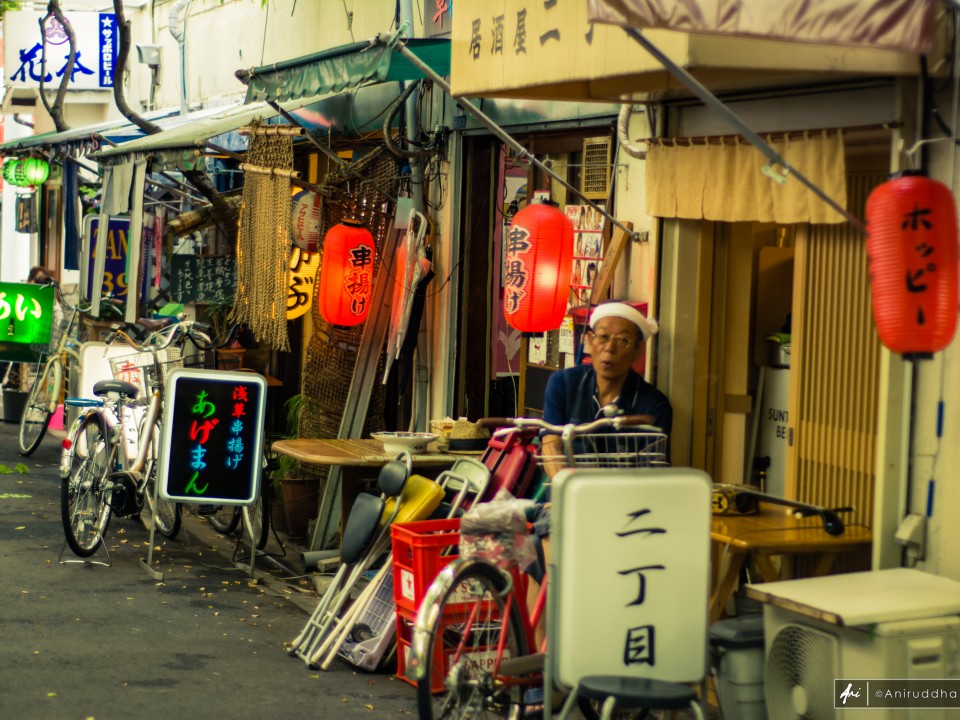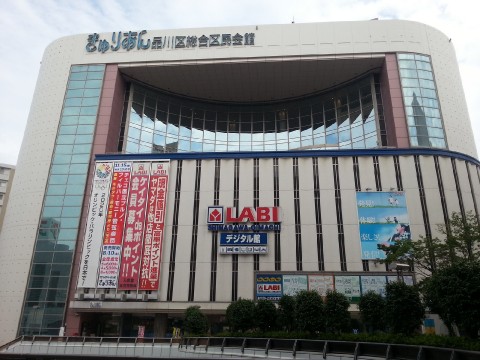Street Photography in Japan
Japan is a great place for photographers and street photography in particular is super exciting
Almost everyone enjoys taking photographs. In Japan, I would venture to say that EVERYONE enjoys taking photographs! Whether it be the camera embedded in modern smartphones or high end digital SLRs, cameras have become an integral part of our lives. And so has photography. My dad was an avid photographer and had a Pentax film camera that became the first camera I used when I was just 6 years old. Times have changed since then, and I have grown older as well! And technology also has come a long long way. Digital cameras are now everywhere and with the advent of the smartphone era, most of us carry around a pretty sophisticated camera with us at all times. And this is excellent in the context of street photography. "Street photography" is all about capturing the sights and moods and moments of people and places that are all around us when we are on the move. The idea is to just walk around the streets of the city and take photographs of everyday people doing everyday things, or if you are really lucky, unusual people doing unusual things! :)
Unlike many other countries, Japan is pretty liberal when it comes to taking photos on the streets. I have been walking the streets of Tokyo for several years now and so far, I have not run into any trouble with the cops or anyone else. But I did see a news report recently, where a 40 year old Japanese man was arrested for taking a photograph of a lady sitting next to him on the train. While the debate rages on about whether he was at fault or not, my view is that the arrested photographer crossed a line of basic decency when he took the photograph of the lady without her permission. It doesn't matter that he was not trying to take an "inappropriate" photograph, but the right thing to do is to ask for permission first. In an open street, taking casual shots where people will obviously be part of the frame is usually fine, but in a restricted space like a train, clicking a lady without her permission would be a strict no no anywhere in the world.
Tokyo is a street photographer's paradise! From the old back lanes of Asakusa to the high end ultra modern streets of the Marunouchi district, there's never a dull moment for the shutterbug. But street photography is also very challenging because you can never anticipate the perfect moment. The scene is always so dynamic that you have to keep your eyes wide open, look out for the slightest indicators and be really quick with your camera.
Helpful pointers.
Here are a few pointers that should be helpful if you are looking to get started with street photography.
1. It makes sense to look at a map (Google Maps is just great!) of the area you are planning to visit. Street photography involves a lot of walking, so depending on your health, fitness and patience, you need to determine a feasible route that you will follow. This route is just a guide... so feel free to deviate into that small back lane that suddenly catches your attention. But having a route is definitely advisable.
2. Stay away from trouble or doing anything that will get you into trouble. Japan, while quite liberal, also has stringent laws about violation of privacy and public indecency or causing any kind of nuisance. As mentioned earlier, while it would generally be fine to take a casual shot of people on the streets, moving up close and taking "inappropriate" shots of women or children is just not acceptable. When in doubt, just drop the idea and move on. Being a pervert will not do you any good. Sometimes, you may come across a situation where someone you have just clicked or are about to click objects to it and asks you to stop. If you have not clicked already, just smile, say sorry and move on. If you have already clicked and the person confronts you, it is advisable to say sorry and delete the photograph in the person's presence and resolve the matter amicably. If it gets out of hand and the cops get involved, well... then the situation could get complicated and a lot would depend on how effectively you can communicate with everyone and hopefully get out of trouble without any legal ramifications. Be aware that the laws in Japan are often open to interpretation and who ends up on the winning side often depends on nationality (foreigners find it tougher) and the ability to communicate fluently and convincingly in Japanese.
3. Some of the best street shots are of people captured in expressive and emotional moments. Look out for the mavericks and the young trendsetters! Tokyo is full of fun people. The young crowds of Harajuku, Shinjuku and Shibuya offer ample opportunities for photographers and based on my personal experience, they enjoy being photographed! :) And while you are at it, watch out for the eyes. No matter what the faces and dresses say, the eyes speak volumes and convey emotions that can often be the difference between a good photograph and a stunning photograph.
4. Visit places that are a mix of old and new. And Tokyo has many such places. Again, Asakusa, Shinjuku, Shibuya and many other parts of the city bring together the best of both worlds. From the old stores selling everything from kimonos to Japanese handicraft, to the high end shopping streets of Ginza and Harajuku... Tokyo has it all.
5. Look for the details... hunt for those interesting plays of light and shadow. Street photography isn't always about wide shots of countless people on the street. Some of the most stunning street shots are those that are able to isolate a moment from the hustle and bustle of the surroundings and light plays a huge role in that.
6. When not shooting people, look for interesting shops, wall graffiti, sign boards, old houses, interesting transportation (like street cars or trams or hand pulled rickshaws).
7. As far as the technical aspects of street photography is concerned, it depends on what you are shooting with. If it's your smartphone camera, you basically just point and shoot. Following rules like the "Rule of Thirds" or playing around with angles and elevations can give you great results. If you have a proper DSLR, then you have a much broader set of options. Personally, I love shooting with a medium wide lens (24 mm, 35 mm, 50 mm) or a standard 18 - 200 mm zoom lens, which gives me the flexibility of taking wider shots or zooming into a closer area if I wish to. A f1.8 or faster lens will give you excellent depth of field variations and will help you to achieve a wonderful effect called "Bokeh", especially if you have glittering lights in the background of your subject. Since your subject would often be in motion, setting a higher ISO (800 or higher, but not going beyond 1600) helps to freeze the motion and get really sharp and in focus shots without any blurring. Be careful to not go beyond ISO 1600, as you may end up with substantial "noise" in your photos which may ruin an otherwise fabulous frame. Also practice moving fast. As I mentioned earlier, street photography is challenging because if you are not ready, you may miss a wonderful shot. So the trick is to always be ready, not fiddle around too much with your camera settings and be prepared to click one or multiple shots of the same scene (taking multiple shots gives you a better chance to later select your favourite frame... the advantage of digital photography is that you can just delete the shots you don't like at no extra expense, as in the case of film).
Get out... click away... and have fun!
These are just simple ideas. I do not claim to be an expert or a professional by any stretch of the imagination. My only intention behind writing this article is to share with you what I have learnt from my experience as a street photographer and with the hope that they will, at the very least, encourage you to get out on to the streets and start taking photographs. For me, photography has been more than just fun... it has also been therapeutic! I dream of exploring more places all around the world and over a period of time, creating an archive of some of my best work for the world to see and cherish.
So get out there... and happy clicking! :)
If you want to see more of my photographs, do head over to http://itsani.smugmug.com/ or visit my blog at http://www.aniruddhamallik.com/
Cheers!
Ani.

Ani
India


















